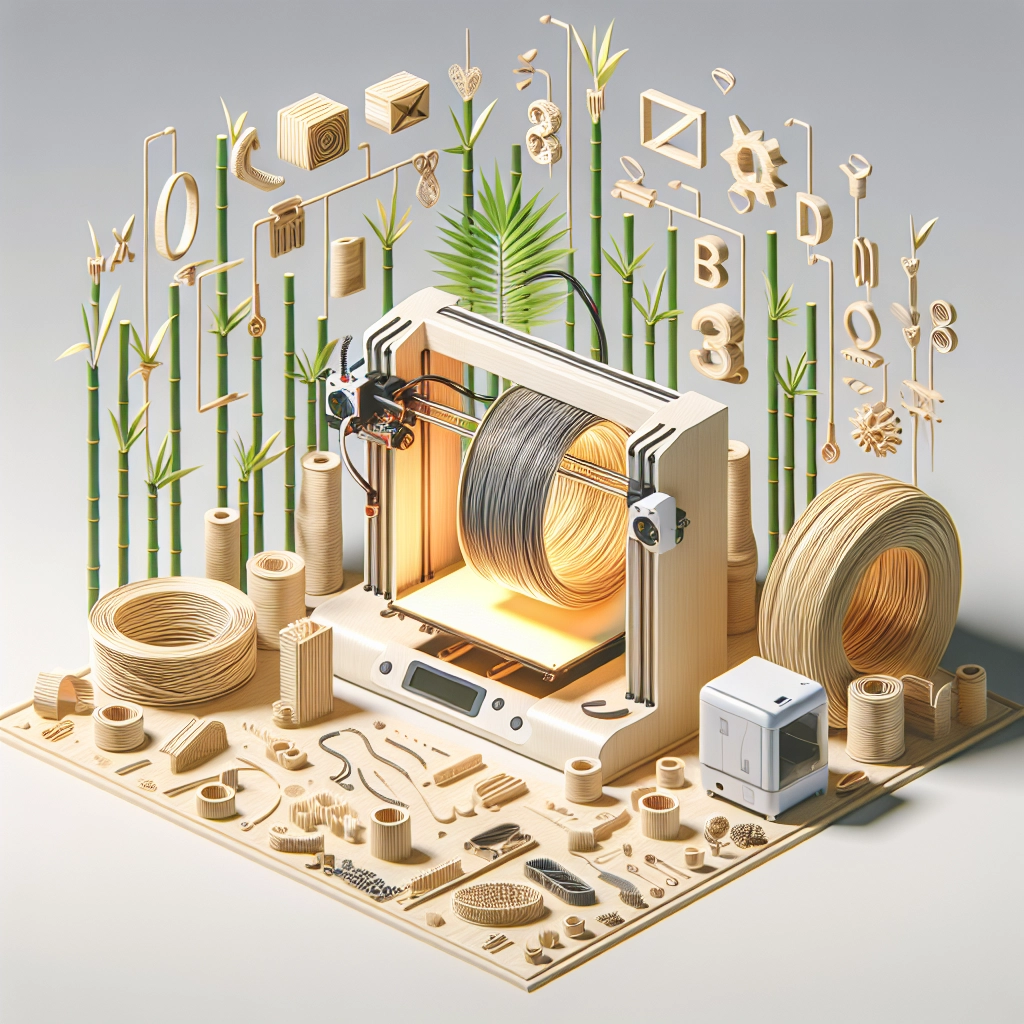Bamboo Filament: Exploring Its Benefits and Applications in 3D Printing
In the ever-evolving world of 3D printing, innovators and hobbyists alike are constantly on the lookout for materials that are not only effective but also eco-friendly. Enter bamboo filament—a unique and sustainable option made from a blend of biodegradable PLA and bamboo fibers. With eco-conscious practices on the rise, bamboo filament offers a compelling alternative to traditional plastic filaments. Let’s dig into the benefits of using bamboo filament and explore its various applications in the world of 3D printing.
The Eco-Friendly Advantage
One of the most significant benefits of bamboo filament is its sustainability. Bamboo is one of the fastest-growing plants on Earth, capable of reaching maturity in just a few months. This rapid growth means it can be harvested responsibly and regrown quickly, making it a renewable resource. When combined with PLA (polylactic acid), which is derived from corn starch and is compostable, bamboo filament emerges as a superstar in the realm of eco-friendly materials.
Using bamboo filament in 3D printing helps reduce reliance on petroleum-based plastics, which contribute significantly to environmental pollution. Opting for this bio-composite not only lowers your carbon footprint but also aligns your projects with a more sustainable ethos, making it a great choice for environmentally conscious makers.
Aesthetic Appeal
Beyond its green credentials, bamboo filament has a distinct aesthetic that can elevate your 3D printed creations. When printed, it often exhibits a beautiful, wood-like appearance, giving your projects an organic feel that can’t be matched by standard plastic filaments. The subtle texture and color variations mimic real wood, making it an excellent choice for artistic pieces, home decor, or functional items that need a touch of warmth.
Furthermore, 3D prints made with bamboo filament can even be sanded and stained without the risk of warping, allowing for further customization. Imagine crafting a unique vase or a rustic jewelry box that feels just as good as it looks!
Enhanced Durability and Strength
When it comes to practicality, bamboo filament doesn’t disappoint. The bamboo fibers added to the PLA base enhance the filament’s strength and durability, making it suitable for functional prints that need to withstand wear and tear. Whether you’re creating tools, functional prototypes, or decorative items that see regular use, this filament can provide the structural integrity that some other materials might lack.
Moreover, bamboo filament typically exhibits excellent layer adhesion during the print process. This means that your prints can achieve a smoother finish and can often handle stress better than those made with standard PLA alone.
Ease of Use
One of the joys of 3D printing is the ability to explore new materials, and bamboo filament makes this exploration as seamless as possible. It is compatible with most FDM printers, which means you usually don’t need to invest in specialized equipment to experiment with it. For best results, though, it’s recommended to use a larger nozzle size (around 0.4mm or more), as the bamboo fibers can clog smaller nozzles.
Bamboo filament also typically prints at a lower temperature than some other composite filaments, usually around 190°C to 220°C. This makes it accessible to beginners who might be intimidated by more complex materials. Plus, it emits less odor compared to some conventional plastic filaments, allowing for a more pleasant printing experience.
Applications in 3D Printing
Bamboo filament is perfect for a variety of projects. Here are some ideas to help inspire your next print:
-
Home Decor: Use bamboo filament to create picture frames, accent pieces, or even furniture. Its wood-like finish adds character to any space.
-
Kitchen Utensils: Create sustainable kitchen items such as spoon rests, spice racks, or trays that can withstand the everyday rigors of kitchen life.
-
Artistic Designs: Sculptures, intricate designs, or wall hangings can shine with the unique texture that bamboo filament provides.
-
Educational Tools: Teachers and students can take advantage of bamboo filament to create teaching aids, models, and prototypes—all with the bonus of sustainability.
-
Digital Fabrication Projects: For those involved in digital fabrication, consider using bamboo filament for prototypes and showcases where both sustainability and sturdiness are essential.
As you embark on your 3D printing adventures, consider bamboo filament as a versatile option that combines eco-friendliness with aesthetic appeal and durability. In a world increasingly driven by sustainability, this innovative material not only benefits the planet but also lets you unleash your creativity. So, the next time you’re planning a 3D print, why not give bamboo filament a try? Earth (and your projects) will thank you!

